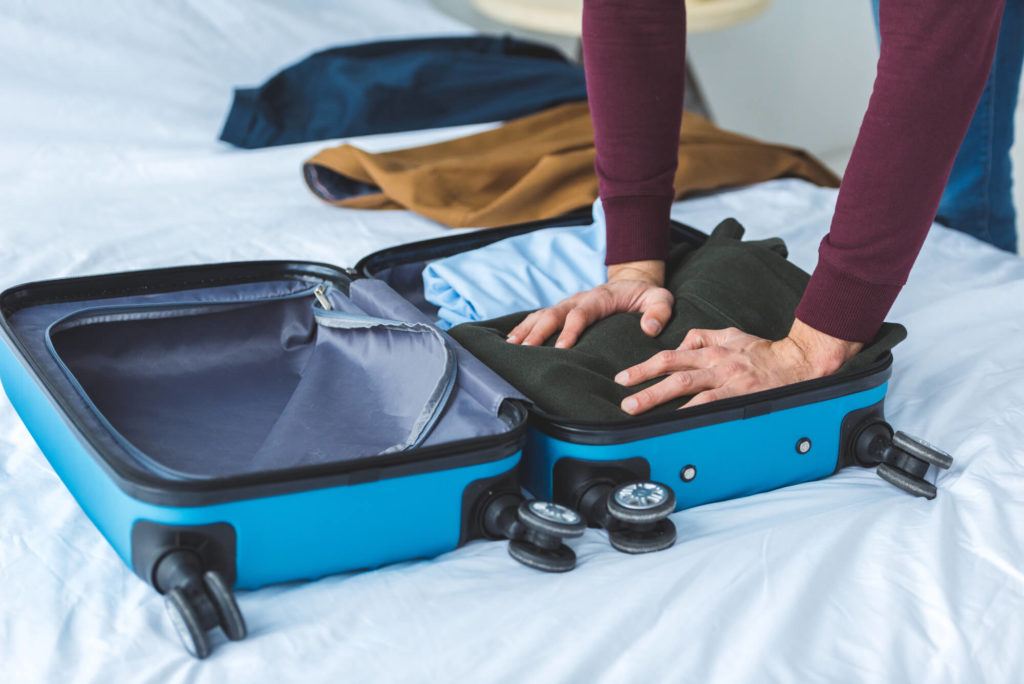Business
2nd-gen ‘smart’ luggage aims to balance form and function
Travelers need to find the right balance between form and function when looking around for new carry-on luggage. Frequent travelers often consider durability and weight. Today’s smart luggage mixes durable and good form and high functionality while offering some pretty neat high-tech features. Incorporating technology into luggage is a welcome and somewhat expected advancement.

When it comes to new carry-on luggage, travelers are looking for the right balance between form and function. At least that’s what frequent travelers such as Evan Saltzman will tell you.
After the lock on his old carry-on broke, he searched for luggage that would hold up to the rigors of air travel without being overloaded with bells and whistles that add unnecessary weight.
“I wanted something durable and lightweight so I knew it would be easy to carry through an airport,” says Saltzman, who owns a watch store in Cranston, R.I.
Eventually, he found the Victorinox Lexicon Hardside Frequent Flyer Carry-On ($460), a Swiss-designed 22-inch rollaboard with recessed wheels and clever compartments that compress his belongings. The only gadgetry was the government-approved combination lock, which Transportation Security Administration officers can open without having to cut it.
“The suitcase was super sleek and didn’t look like any of the other carry-ons I’d been looking at,” he says. “I’ve had nothing but good luck with the other Victorinox bags and products, so I felt this one would be perfect for me.”
And so far, so good. The luggage has kept its form, and the lock still works.
Saltzman is one of many travelers turned off by the complexity of first-generation “smart” luggage crammed with batteries, scales and other electronics that add weight and cause unexpected problems. Now they want balance.
“Manufacturers have fine-tuned the smart luggage category,” says Michele Pittenger, president of the Travel Goods Association, a trade association for luggage manufacturers. “They’re paring down extra, cool-but-unnecessary features. The result is enhanced, lightweight bags that keep up with modern consumers’ needs.”
Greg Wilson, a product manager for Kathmandu, a New Zealand-based luggage and travel goods company, has a different take. “To be honest, until recently there was not much evidence of truly smart luggage out there,” he says.
Early smart luggage was a misfire. There were problems with nonremovable batteries, which led to the demise of such brands as Bluesmart. Wilson says that on some smart units, battery packs overheated. Also, cable management was an issue. Luggage designers hadn’t factored in the charging cables that were now protruding from the luggage and frustrating users.
This summer, Kathmandu rolled out its first backpack equipped with the Joey T3, a system that features a removable battery and companion mobile app developed by a team of Bellingham, Wash.-based designers that specializes in technology for smart luggage. Among the innovations: more efficient ways to manage power consumption for your gadgets, an alarm system and zippered pockets for cords.

Last year, smart luggage brands like Bluesmart and Raden died premature deaths because their bags had built-in, as opposed to removable, batteries. After their demise, smart luggage developers seem reluctant to even call their luggage “smart.”
“We never thought of ourselves as a smart luggage brand,” says Mayur Bhatnagar, co-founder and CEO of Arlo Skye. “We simply thought of leveraging the unused real estate located underneath the telescopic handle.”
That “real estate” is where Arlo Skye keeps the removable battery in its signature Polycarbonate Carry-On ($450). After the Federal Aviation Administration and airlines mandated that passengers who travel with a smart carry-on must be able to remove the battery, Arlo Skye’s suitcases remained airworthy. Earlier this year, the company launched a Series 3 battery with a more sophisticated power-delivery chip.
Another reader favorite is the Away Bigger Carry-On with Pocket. In addition to the integrated lock and built-in compartments that allow you to squeeze a lot into a small space, the Bigger Carry-On has a removable battery for charging phones and tablets. Another neat feature: an outside compartment with space to store passports, itineraries or boarding passes.
That was the main selling point for Deniz Sonmez. “It appealed to me primarily because I was often finding myself in a jam with my phone battery,” says Sonmez, who works for a real estate firm in New York. She liked the battery so much that she removed it and now carries it with her wherever she goes, just in case her iPhone runs out of juice.
“I think incorporating technology into luggage was a welcome and somewhat expected advancement — at least for me,” she says.
Other new smart luggage offerings include Luggage Tech’s Nile Collection carry-on ($249). It adds one more gizmo to the lock and removable battery: the 28-inch model has a GPS tracker that alerts you when the bag leaves or enters your proximity. Incremental upgrades like that seem to be okay with frequent travelers.
If there’s an extreme example of this trend, it is the Modobag ($1,495), billed as the carry-on bag that carries you. I’m not making this up. It has all the electronics you’d expect from a smart bag — batteries, tracking technology, even a proximity alert system — plus it carries you through the airport at a maximum speed of 8 mph.
Sure, this is technology for technology’s sake, but if you ever have to make a gate change at Denver International Airport or Houston George Bush Intercontinental Airport, you might find yourself wishing you had one of these bags.
(Featured image by DepositPhotos)
—
DISCLAIMER: This article expresses my own ideas and opinions. Any information I have shared are from sources that I believe to be reliable and accurate. I did not receive any financial compensation for writing this post, nor do I own any shares in any company I’ve mentioned. I encourage any reader to do their own diligent research first before making any investment decisions.

-

 Markets2 weeks ago
Markets2 weeks agoCocoa Prices Drop Amid Speculative Selling and West African Supply Concerns
-

 Business22 hours ago
Business22 hours agoThe TopRanked.io Weekly Digest: What’s Hot in Affiliate Marketing [PureVPN Affiliates Review]
-

 Cannabis1 week ago
Cannabis1 week agoIs Aurora Cannabis Stock a Risk Worth Taking?
-

 Fintech4 days ago
Fintech4 days agoRobinhood Expands to Europe with Tokenized Stocks and Perpetual Futures
























